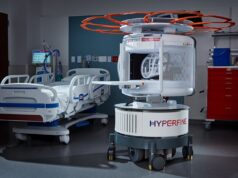Joanna Schaafsma (Toronto, Canada) talks to BLearning Neuro at WFITN 2019 (World Federation of Interventional and Therapeutic Neuroradiology; 21–24 October; Naples, Italy) about the potential benefits and downsides of intracranial vessel wall imaging in stroke patients. Intracranial vessel wall imaging “mostly benefits” those patients where you do not know the exact stroke aetiology or where you are unsure what type of intracranial arteriopathy you are dealing with, Schaafsma notes, adding that one of the main downsides of vessel wall imaging is the long scan duration and that image interpretation requires experience.
Schaafsma explains that there “have not been many prospective studies” on the value of vessel imaging for intracranial arteries, and points to her team’s own prospective and retrospective studies which “confirmed” that in those selected stroke patients you need to consider intracranial vessel wall imaging. However, she adds that a current “pitfall” is that there is no “gold standard to prove that what vessel wall imaging shows is the truth”, and claims that “we need long-term follow-up to confirm that vessel wall imaging was right”.













